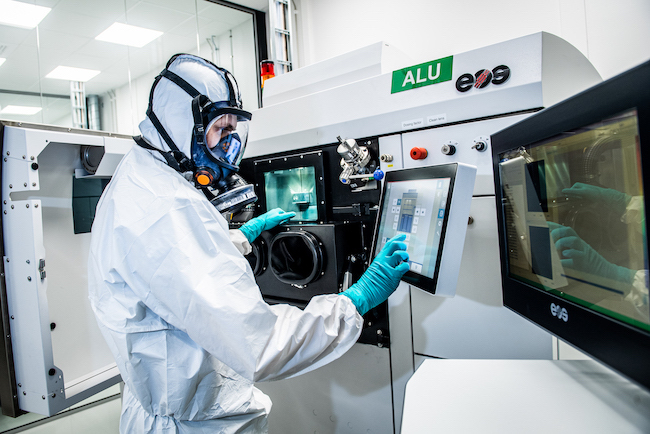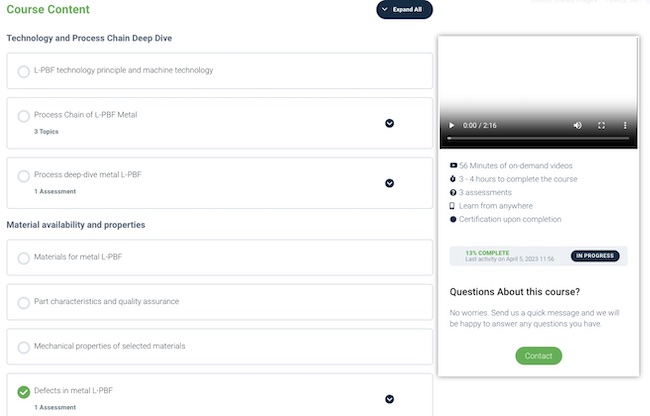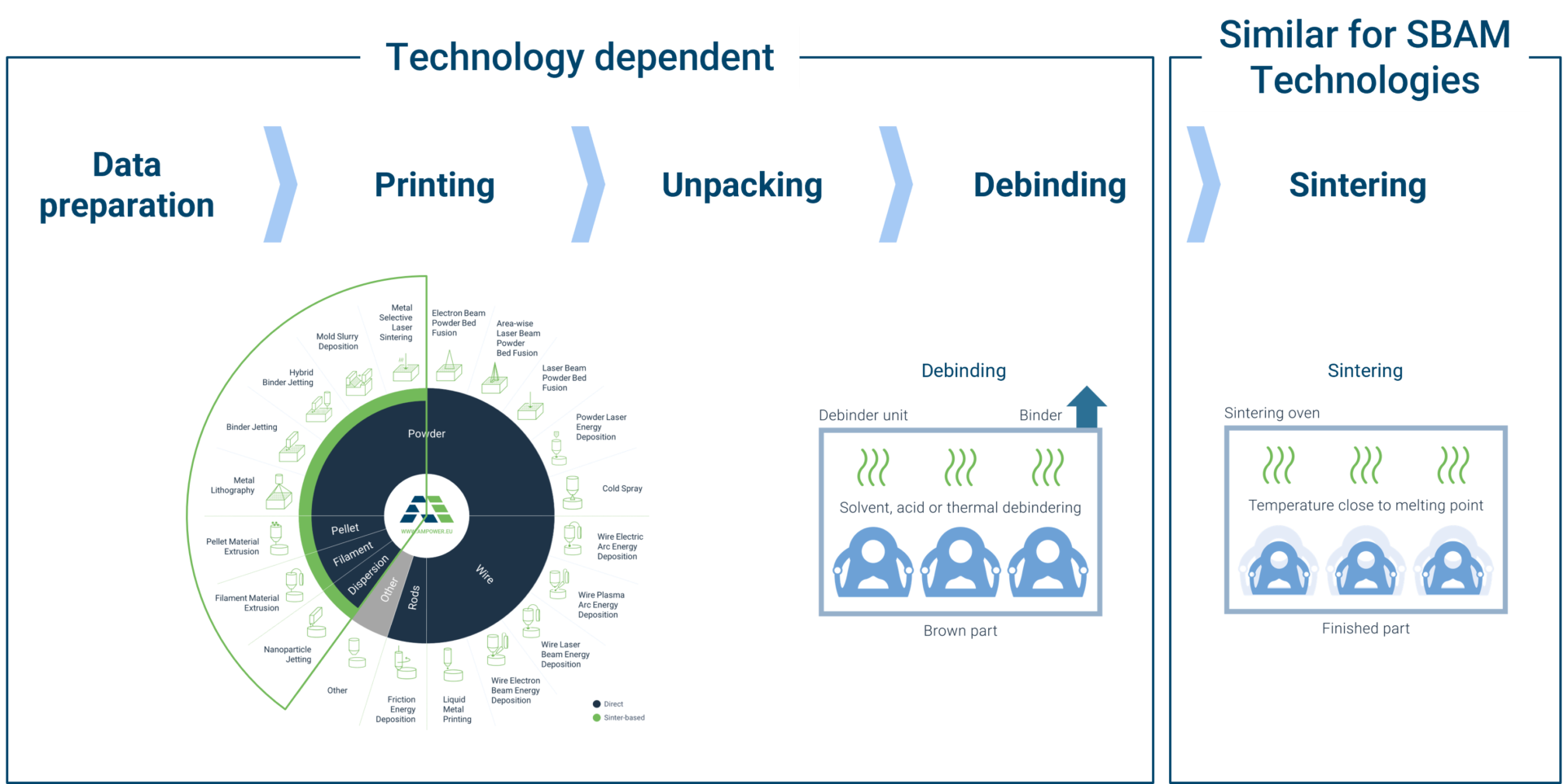Metal 3D Printing
Learn more about Metal 3D printing
Online learning courses and other resources related to metal 3D printing

The successful implementation of Metal 3D printing requires a wide range of different skills. We have summarized the most important resources related to Metal Additive Manufacturing on this page – including online courses, design guidelines and success stories.
Metal 3D printing Online Learning Courses
Metal Technologies - ADDITIVE MANUFACTURING ONLINE LEARNING
Dive deeper into metal technologies
The course METAL TECHNOLOGIES allows you to dive deeper into the different metal technologies. Besides maturity of all common metal technologies, it covers the working principle, technical characteristics, application examples and supplier landscape of the following processes:
- Laser Powder Bed Fusion
- Electron Powder Bed Fusion
- Metal Binder Jetting
- Powder Laser Deposition
- Wire Arc Additive Manufacturing
- Metal Material Extrusion
This course will enable you to select the right metal process for your applications.
Cost Calculation Metal- ADDITIVE MANUFACTURING ONLINE LEARNING
Quickly estimate costs for metal applications
The Additive Manufacturing online learning course COST CALCULATION METAL enables you to deeply understand the cost drivers for the most common AM technologies. It covers the fundamentals of AM cost calculation and at the same time provides general values for inhouse and external manufacturing costs for the following metal technologies:
- Laser Powder Bed Fusion (LPBF)
- Electron Powder Bed Fusion (EPBF)
- Metal Binder Jetting
- Metal FDM
- Laser Metal Deposition (LMD)
- Wire Arc Additive Manufacturing (WAAM)
This course is specifically targeted towards designers and professionals that need to calculate costs for metal AM.
Metal Laser Powder Bed Fusion Deep-dive
Get the most out of L-PBF
The Additive Manufacturing online learning course METAL L-PBF DEEP-DIVE enables you to fully understand the most mature metal technology. It covers key topics such as technology and process chain, material availability and properties as well as design guidelines and applications. This course is specifically targeted towards designers and other professionals that are working with L-PBF.
Sinter-based Additive Manufacturing Deep-dive
Dive deeper into the world of sinter-based Additive Manufacturing
The Additive Manufacturing online learning course Sinter-based Additive Manufacturing deep-dive enables you to fully understand technologies such as Metal Binder Jetting and Metal Material Extrusion. It covers key topics such as technology and process chain, material availability and properties as well as design guidelines and applications. This course is specifically targeted towards designers and other professionals that are working with sinter-based AM technologies.
Design for AM metal guide
Design for AM Metal
How to design for metal technologies
Unlock the full potential of metal Additive Manufacturing (AM) with our comprehensive Design for AM Metal guide. Tailored for industrial users, this essential resource emphasizes the critical role of design in maximizing the efficiency and capabilities of metal AM. Learn how to optimize your designs for different processes, resulting in stronger, lighter, and more reliable components. Our guide addresses key design considerations specific to metal AM, including support structures, accuracy and surface roughness. This guide can both be applied when designing new parts from scratch or when you consider to use AM for a part that has previously been manufactured with a different technology. Besides giving guidelines on how to properly design for a certain technology, the guide can also be used to select the right metal process for your application.
Enhance your understanding and skills in metal AM by downloading our detailed guide, available below.
Additive Manufacturing Online Learning Trial Course
Subscribe to start free trial
You can access the first course Additive Manufacturing Fundamentals for free after subscribing to the AMPOWER Academy newsletter.
Understand the most important topics to get started with Additive Manufacturing













































